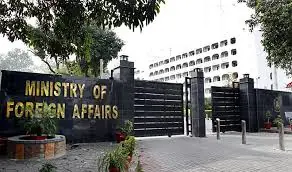Flood waters enter Punjab as water level in Indus river continues to rise
After flash floods due to torrential rains inflicted heavy losses to several areas in Khyber Pakhtunkhwa, flood waters have entered Punjab, increasing the risk of flooding in several areas of the province.
There is a grave risk of flooding in Mianwali where authorities are looking to safely evacuate residents due to a high level of flood in the Indus River at Chashma Barrage.
Flood water has entered the settlements and destroyed the crops in the low lying areas of Mianwali.
Inflow of water at Jinnah barrage is high and outflow is low and the water level is increasing continuously. Water inflow at Jinnah barrage is recorded more than 400,000 cusecs while outflow has been recorded at 391,000 million cusecs.
The water level in the Indus River near Rajanpur is on the rise and there is a risk that the town may suffer another flood.
Moreover, due to a flood in Chenab River, the undeveloped areas of Liaquatpur have been submerged.
High level flood at Taunsa Barrage in Indus River
There is a high level of flood in the Indus River at Taunsa Barrage where the water level is recorded at 515,723 cusecs.
According to the Flood Control Center, the water level in the Indus River at the Taunsa barrage is continuously increasing.
Rescue operations has been started to evacuate people from many affected areas, while in many places, people have started to move to safer places by themselves.
Meanwhile, a child trapped in flood in Dera Ismail Khan was safely pulled out after four days. The child was sitting on a tree for four days.
The district administration has imposed a flood emergency in Dera Ghazi Khan and 10 relief camps have been established at different places in the areas adjacent to the Indus River where the victims are being provided with accommodation and food as well as treatment facilities.
Indus River seething with high flood waters at Guddu, Sukkur barrages
The fate of hundreds of thousands of people in Sindh lies with a 90-year-old Sukkur barrage that directs the flow of water from the mighty Indus River into one of the world’s largest irrigation systems.
Indus River has been in high flood at Guddu and Sukkur barrages. The Guddu barrage’s designed capacity is 1.2 million cusecs. The Sukkur barrage’s capacity was 1.5 million cusecs when it was built in 1932. In 1945 its 10 gates were closed, leaving it with 56 gates with a designed capacity of 900,000 cusecs. The Kotri barrage’s designed capacity is 875,000 cusecs.
The mighty Indus River that courses through Pakistan’s second-most populous region is fed by dozens of mountain tributaries to the north, but many have burst their banks following record rains and glacier melt.
The government has declared an emergency to deal with floods caused by record monsoon rains that have affected nearly 33 million people – many of whose livelihoods depend on the Indus.
Sindh has been pounded by weeks of torrential rain that have flooded farmlands across the province, but now torrents from swollen tributaries in the mountainous north are coursing down the Indus, due to arrive in coming days.
The river rises in Tibet and bisects Pakistan as it meanders more than 3,000 kilometres (2,000 miles) south to the Arabian Sea near Karachi.
“That water coming into the river is scaring us,” Irshad Ali, a 42-year-old farmer near the city of Sukkur, told AFP as he lamented the date palms and vegetable patches he lost to the monsoon.
“A big storm is about to come.”
Water from the Indus is already lapping over its banks in several places, and unless the Sukkur Barrage can control the flow, catastrophe will result.
Originally known as Lloyd Barrage, it was considered an engineering marvel when completed in 1932, capable of discharging 1.4 million cubic metres of water per second through 19 steel gates hinged between stone pillars.
It is the centrepiece of the city, a favourite site for tourists to photograph, and also provides a key bridge across the river.
“It has completed 90 years, whereas it had a 50-year guarantee,” Minister for Water Resources Syed Khursheed Shah told reporters.
“So we are 40 years beyond its guaranteed life.”
(With input from AFP)
For the latest news, follow us on Twitter @Aaj_Urdu. We are also on Facebook, Instagram and YouTube.


















Comments are closed on this story.